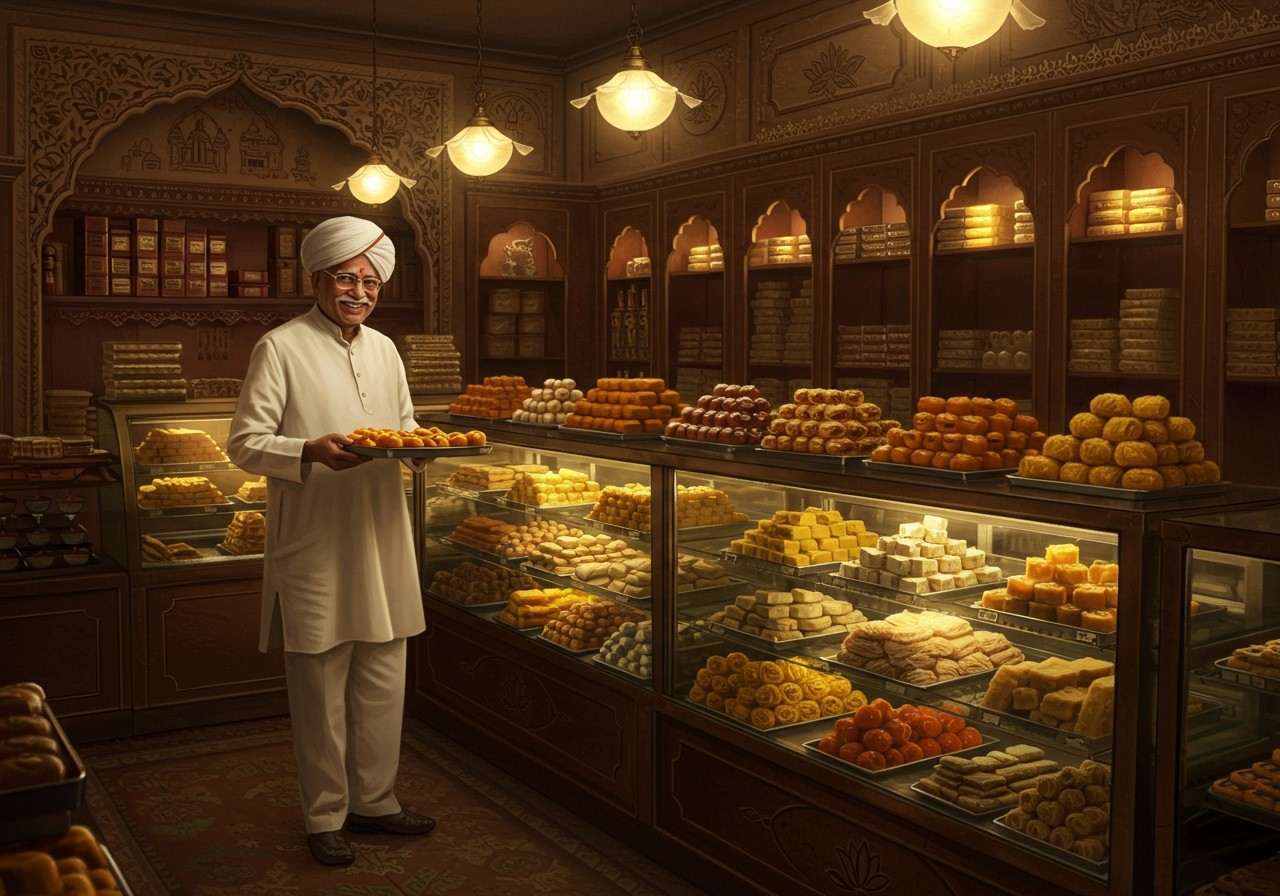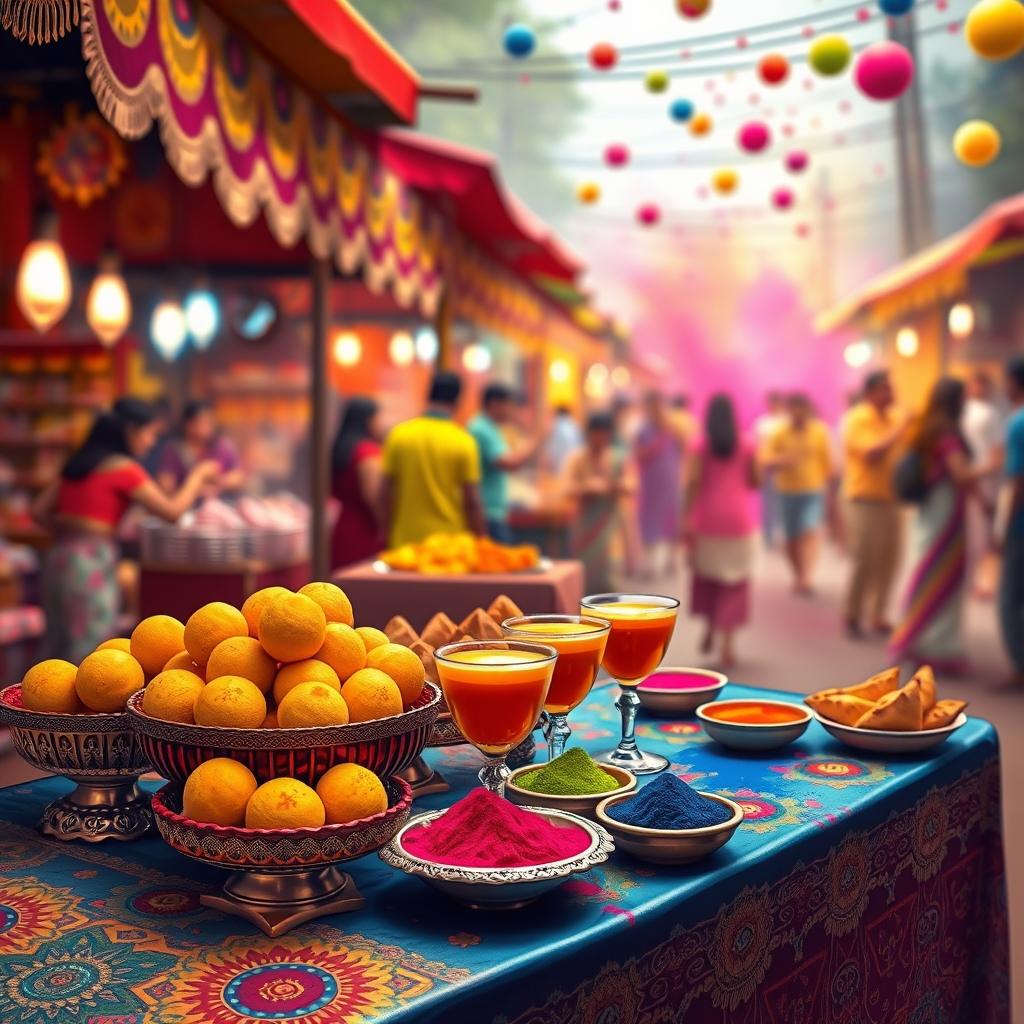
In India, can any celebration truly be complete without a box of mithai? From the birth of a child to a wedding, a festival, or even just a small personal victory, sharing sweets is our way of sharing happiness. Indian mithai is not just food; it’s an emotion, a tradition, a sweet thread that connects us to our roots and to each other. But have you ever wondered how these delightful treats came to be? Their story is as rich and layered as a piece of barfi, evolving over thousands of years.
The significance of mithai in our festivals is immense. It’s a symbol of joy, prosperity, and the sweetness of life. During celebrations like Holi or Ganesh Chaturthi, offering and sharing sweets is a core part of the ritual, signifying our gratitude and love. This sweet journey began long, long ago, in a very simple form.

The Ancient Sweet Beginnings
Long before the fancy mithai shops we see today, our ancestors satisfied their sweet cravings with nature’s bounty. The earliest sweets were made from simple ingredients like honey, jaggery (gur), and fruits. Around 500 BCE, a massive breakthrough happened – our ancestors figured out how to refine sugar from sugarcane! This was a game-changer. Soon, milk and its derivatives like ghee, curd, and khoa became central to sweet-making, giving birth to timeless classics like peda, barfi, and the beloved ladoos. Temples became the heart of this culinary art, with special sweets like modaks being prepared as offerings (prasad) for our deities.
A Dash of Royal Flavour: The Mughal Influence
When the Mughals arrived in the 16th century, they brought with them the opulent tastes of Persia. This era infused our mithai with a new layer of richness and aroma. Ingredients that we now consider essential, like saffron, fragrant rosewater, and crunchy dry fruits, became popular. This beautiful fusion gave us some of our most iconic sweets, including the melt-in-your-mouth Gulab Jamun and the royal Shahi Tukda.
The British Twist: A New Chapter for Mithai
The British colonial era ushered in another wave of change. It was a time of blending cultures, and our sweets were no exception. You might wonder what kind of mithai graced the tables back then. Well, alongside our timeless classics, new fusion desserts inspired by British puddings and cakes began to appear.
A big question is whether the ingredients changed during this time. Absolutely! The introduction of refined sugar in a more widespread manner, along with Western baking methods and dairy products like cream and butter, gave our traditional sweets a different texture and taste. This paved the way for exciting new creations. The British influence wasn’t just about taste; it also changed how mithai was made. With new trade routes and technologies, production became more organised, allowing a wider variety of sweets to reach people across the country.
Sweet Freedom: Mithai in Independent India
After independence, there was a beautiful resurgence of pride in our own culture. Despite the wave of British influence, our deep-rooted mithai traditions stood strong. But why did they endure? Because these sweets are woven into the very fabric of our culture, an inseparable part of every puja, festival, and family gathering. This period saw a celebration of regional diversity. Bengal gave us the spongy Rasgulla and delicate Sandesh, while Rajasthan perfected the art of Besan Ladoo and Moong Dal Halwa. Each region’s unique mithai became a proud emblem of its identity.
Mithai in the Modern Age: Tradition Meets Innovation
Today, the world of Indian mithai is more exciting than ever! While we cherish the age-old recipes passed down through generations, we are also embracing new ideas. Modern sweet makers are creating fusion mithai, blending traditional Indian flavours with global concepts. As people have become more health-conscious, we now have healthier options like sugar-free sweets or those made with natural sweeteners like dates and jaggery.
Even today, you can see the lingering British influence in some of our popular sweets. Think of the rich, decadent halwas or certain sweet breads that beautifully blend Indian spices with Western baking techniques. The presentation has also become grander, with beautiful packaging making mithai a popular choice for luxury gifting. In today’s fast-paced world, mithai remains a cherished connection to our roots. It’s the taste of nostalgia, the sweetness of celebration, and a reminder of the traditions that bind us together.
As we prepare these delectable sweets for festivals, the presence of our beloved deities fills our homes with blessings. To make your puja truly special, having authentic, sacred items is essential. At poojn.in, we understand this sentiment. Celebrate the sweetness of tradition with our curated collection of puja essentials.
- Bring Home Divine Blessings: An auspicious celebration begins with invoking our gods. This beautiful Maa Laxmi & Lord Ganesha Murti is perfect for your home temple, filling your space with divine energy as you offer your lovingly prepared mithai.
- Embrace Timeless Divinity: For a truly special puja, consider this exquisite Original Ashta Dhatu Antique Maa Lakshmi Murti. Crafted with devotion, it’s a timeless piece that will be cherished for generations, witnessing countless sweet celebrations.
At poojn.in, we are dedicated to helping you uphold your traditions with ease and authenticity. For any assistance, feel free to call us at 03369029784 or send a message on WhatsApp at 9476142738.
A Sweet Future: Honouring Our Legacy
The journey of Indian mithai is a beautiful reflection of our history. From the simplest jaggery-based sweets to the rich, complex creations of today, it has absorbed influences from every era while holding on to its core identity. As we savour each bite, we are not just enjoying a sweet treat; we are partaking in a legacy that is thousands of years old. This sweet legacy continues to evolve, promising to bring joy and unite us for generations to come.


